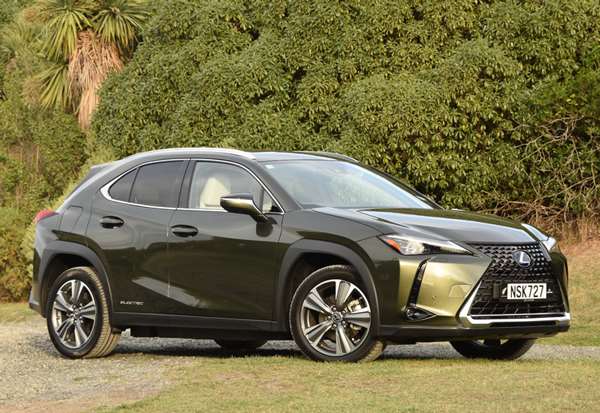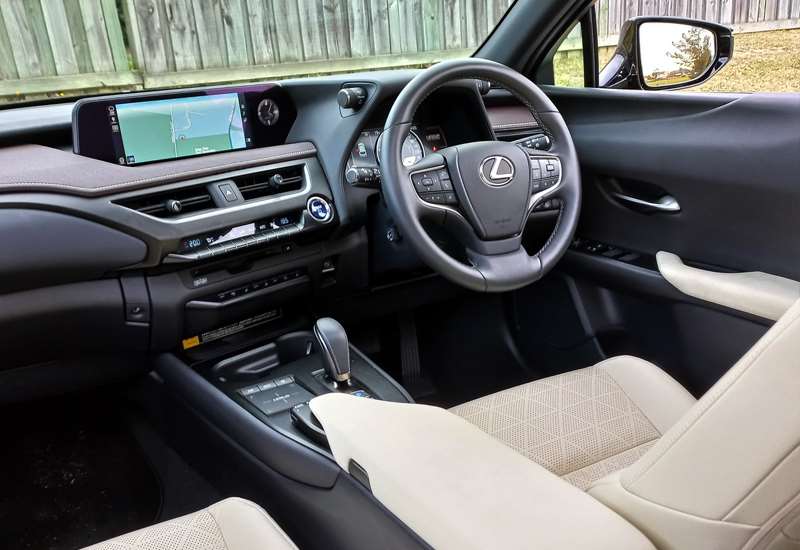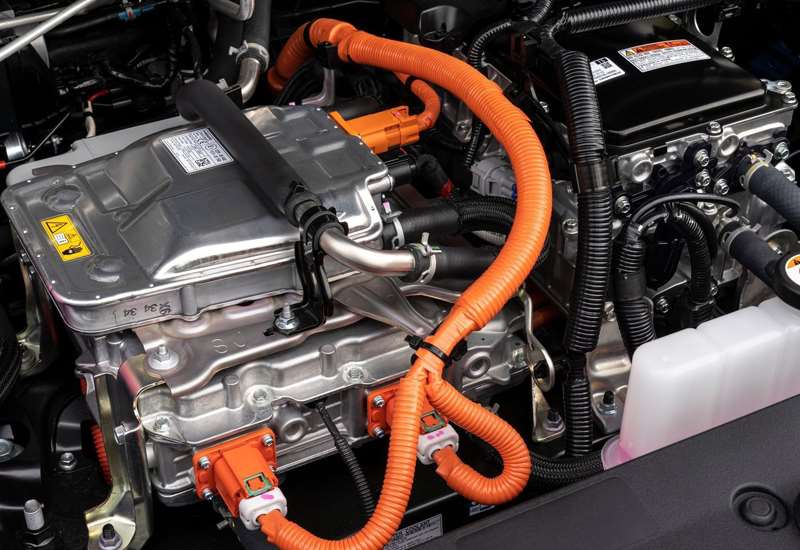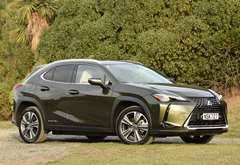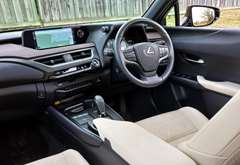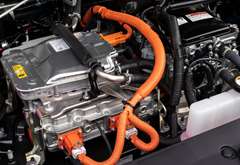Lexus has finally joined the all-electric revolution with a battery-powered version of the UX compact SUV. David Thomson has been checking it out.
What’s new?
Back in the mid-1990s, Toyota seemed to be leading the world into a brave new future of electric motoring, spearheading its efforts with the planet’s first mass-production petrol-electric hybrid, the Prius.
The Prius and its hybrid technology proved hugely popular. New Prius hybrid derivatives such as the compact Prius C appeared, and hybrid technology was soon applied to more conventional models such as the Camry. Plug-in as well as self-contained hybrids were added to the mix, and the new technology was widely deployed across Toyota’s luxury brand, Lexus.
About 10 years ago, the leading edge of green motoring moved to fully-electric vehicles, with the appearance of the Nissan Leaf, the emergence of Tesla, and burgeoning efforts by others to introduce cars that dispensed with the fossil-fuelled internal combustion engine. Toyota, focused on refining its hybrids and advancing hydrogen technology, was left behind.
Catch up mode has now been engaged, with Toyota pledging late last year to invest two trillion yen (more than $NZ25 billion) in a programme that will see it introduce 30 fully electric vehicles by 2030, and by 2035 transform Lexus into an EV-only brand.
It is fitting, then, that the first battery electric vehicle (BEV) Toyota has introduced in New Zealand is a Lexus. That vehicle is the UX300e, a new variant of the UX compact luxury crossover that has been available here in pure-petrol and hybrid form since 2019.
Like its UX siblings, the 300e uses the same underlying platform as the Toyota C-HR, but re-engineered to accommodate a 54kWh lithium-ion battery, installed under the floor.
The battery powers a 150kW/300Nm electric motor, conventionally located under the bonnet, which drives the front wheels. Further changes under the skin include refinement of the steering and suspension, and noise-reducing measures including acoustic glass, and additional sound deadening under the floor and around the wheel arches. The UX300e is priced at $79,900, and once the $8625 Government Clean Car discount is factored in, it is effectively a $71,275 machine. As such, it is competitively pitched against BEV compact SUV rivals such as the Hyundai Kona Electric, Mercedes EQA, and Mazda MX-30.
What does it look like?
The Lexus UX is neatly styled, with the main talking point being its nose, which sports the signature Lexus ‘‘spindle grille’’ and thin, angular LED light clusters. Black plastic surrounds on the wheel arches, along the sills, and at the rear give the requisite SUV look. Pronounced crease lines add interest along the sides. Linked by a strip of LEDs, rear tail-light clusters protrude a little from the body, in part to aid aerodynamic efficiency.
The 300e does not exactly flaunt its fully electric status. The front grille appears solid but is fitted with shutters that open for cooling when required, and there are discreet ‘‘electric’’ badges set low on the rear doors. Flaps on both flanks give access to the vehicle’s two charging ports, the driver’s side port being for home charging, and the passenger’s side port for 50kWh commercial chargers.
What’s it like inside?
The interior trims look great, are high-quality, and superbly finished.
The rear seating has been revised to accommodate the battery, with those in the back sitting a little higher than in other UX variants (with a corresponding reduction in head room). This further tightens what was never an especially generous rear seating position, emphasising that the UX is a compact crossover.
Unusually though, the boot gains from the BEV configuration extending into space that would otherwise have been occupied by the fuel tank. Accessed via a power-operate tailgate, it is appreciably deeper, with capacity increased from 268 to 310 litres.
Up front, the cabin feels reasonably roomy, and it is here that the plush trims (which take inspiration from the look and textures of traditional Japanese paper) are most in evidence.
There is, though, some fiddliness to be endured in the layout and operation of the secondary switchgear for infotainment and creature comfort features. The primary issue here is the ongoing reliance on a centre-console mounted touchpad to navigate the main 10.3-inch display screen, but useability also suffers with the small size and positioning of other buttons.
Being a BEV, the UX300e has no gearbox, and what would have been the gear lever becomes the drive selector. Along with reverse and drive, there is a ‘‘B’’ mode, which fully activates the vehicle's regenerative braking. Tucked behind the multi-function steering wheel, paddle shifts controls are deployed to change the level of that regenerative braking through four settings.
Carrying over from the rest of the UX range, knobs protruding from either side of the instrument binnacle are a design curiosity; one enables selection of eco, normal or sport modes, while the other alters the vehicle's stability controls.
The main instrumentation is fully digital, and while the displays have been tweaked for the fully-electric UX, the overall aim seems to have been to keep things as reassuringly mainstream as possible.
What comes as standard?
The UX300e is only offered in one trim grade, Limited, and it provisions an abundance of standard kit.
Leather trimmed, and fully power adjustable, the front seats are heated and ventilated, and the steering wheel is heated, too. There is wired Apple CarPlay and Android Auto connectivity, wireless phone charging, and voice control for key infotainment functions. Dual zone climate control, a power-operated sunroof, sat nav with speed limit recognition, and plenty more besides is also provided.
Key driver aids and safety systems include a head-up display, active radar cruise control, auto-dimming headlights, 360-degree camera, and a raft of active lane keeping, cornering, blind spot mitigation and emergency braking systems.
What’s it like to drive?
The UX300e is exceptional in its ability to provide a driving experience that is refined and cossetting.
Around town it is smoothly responsive under acceleration, near-silent in operation, and adept at isolating its occupants from the impact of poorly surfaced streets. This BEV version of the UX is better yet, in many respects, on the open road, most notably because road noise is superbly supressed, even over coarse chip surfaces.
A 0-100kmh time of 7.5 secs makes this variant the most accelerative UX of all. In typical BEV fashion, the UX300e is smoothly responsive in its mid-range acceleration, and well as decently brisk off the mark.
Driver engagement is dulled by the regenerative braking set up. The regenerative effect, while fine around town, is simply too mild at open road speeds to enable the ‘‘onepedal’’ open road driving (using the paddles rather than the brake pedal to slow the car) that is such a fun feature of some battery-powered cars.
That said, thanks to the impact of those batteries on weight distribution, the 300e is surely the pick of the UX pack for handling balance. As well as being nicely balanced, it corners with relatively little roll, and maintains excellent body control even when traversing poor surfaces at speed.
There is a potential catch though, which is the vehicle’s real world open-road range.
Ease of electric motoring?
Cutting to the chase, equipping the UX300e with a 54kWh battery pack means a lesser range between recharges than for rivals such as the Mercedes EQA and Hyundai Kona EV: their flagship variants boast a 64kWh and 66.5kWh battery capacity respectively. A WLTP range figure of 315km for the UX300e equates to a useable real-world open road range of around 200km. In favourable circumstances with someone attuned to driving in a smooth, economical manner at the helm, that might stretch to 230km, or even a little more. On the other hand, when the vehicle is heavily laden or traversing hilly terrain, it could equally be quite a bit less.
Range will not be a concern while motoring around town, or even when routinely venturing anywhere up to 40 or 50km further afield.
But on longer trips you will be looking for charging opportunities more often than in the EQA or Kona EV, which have real-world ranges that best the UX300e by 50km and by over 100km respectively.
Venturing from Dunedin as far as Timaru, Invercargill or Alexandra without a top up along the way will, for example, be pushing into range anxiety territory at the very least. Points beyond that will require a recharging stop for sure.
Mind you, Mazda’s MX-30, which packs an even smaller 35.5kWh battery pack, has a useable range that is around 50km less.
This highlights a need, common with any EV purchase, to think carefully about the motoring you will want to do and the amount of time you will be prepared to spend stopping at recharge points on longer trips.
When it comes to re-charging, home-based options are trickle charging via a regular three-pin plug, or via a wall charger, which will lift the battery from near-empty to full overnight.
The UX300e connects to commercial rapid chargers using a Chademo DC charge port that is the Japanese industry standard but incompatible with the next-generation of even more powerful hyper-chargers. Hook up to one of the ubiquitous 50kWh rapid charge units, and the UX300e will recharge from 10% to 80% of battery life in around an hour.
- David Thomson
